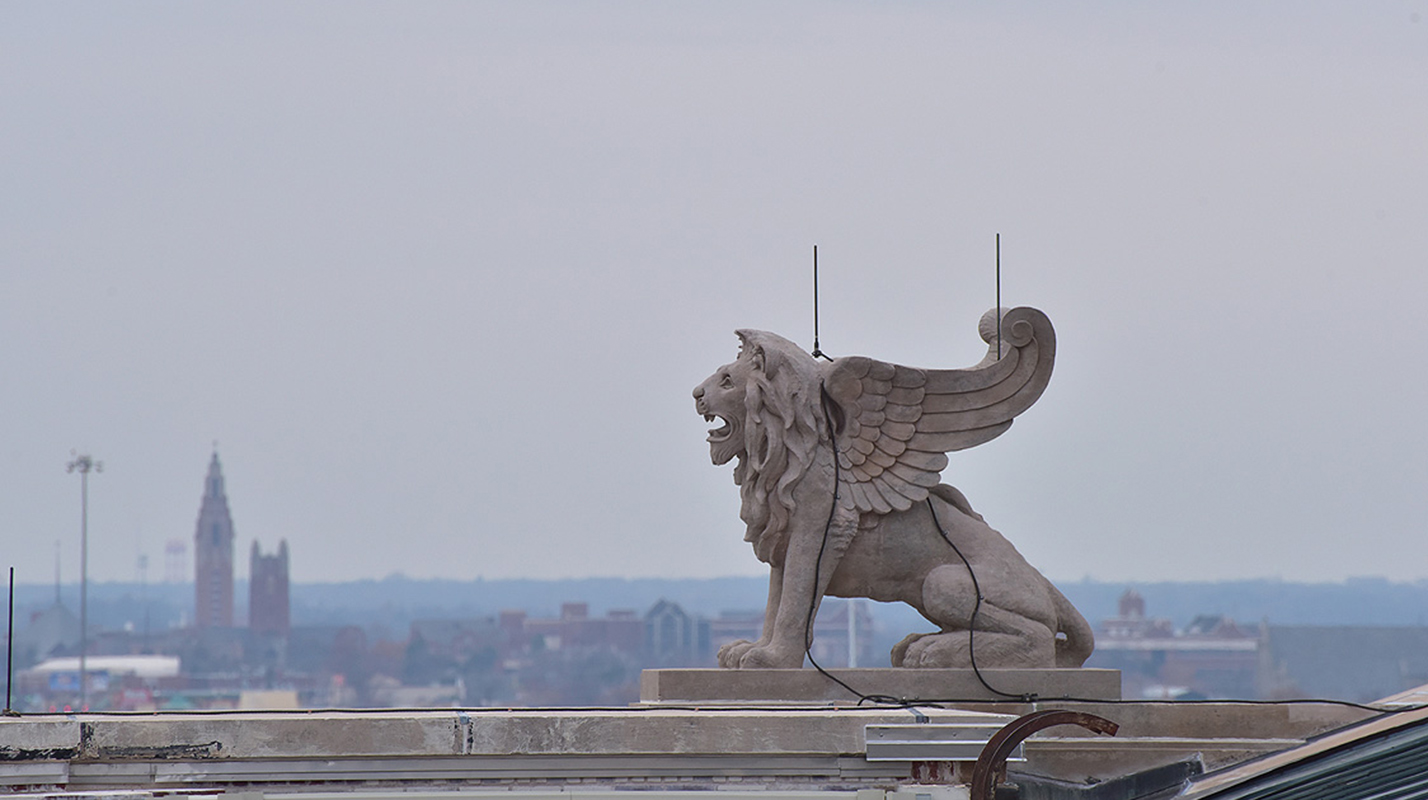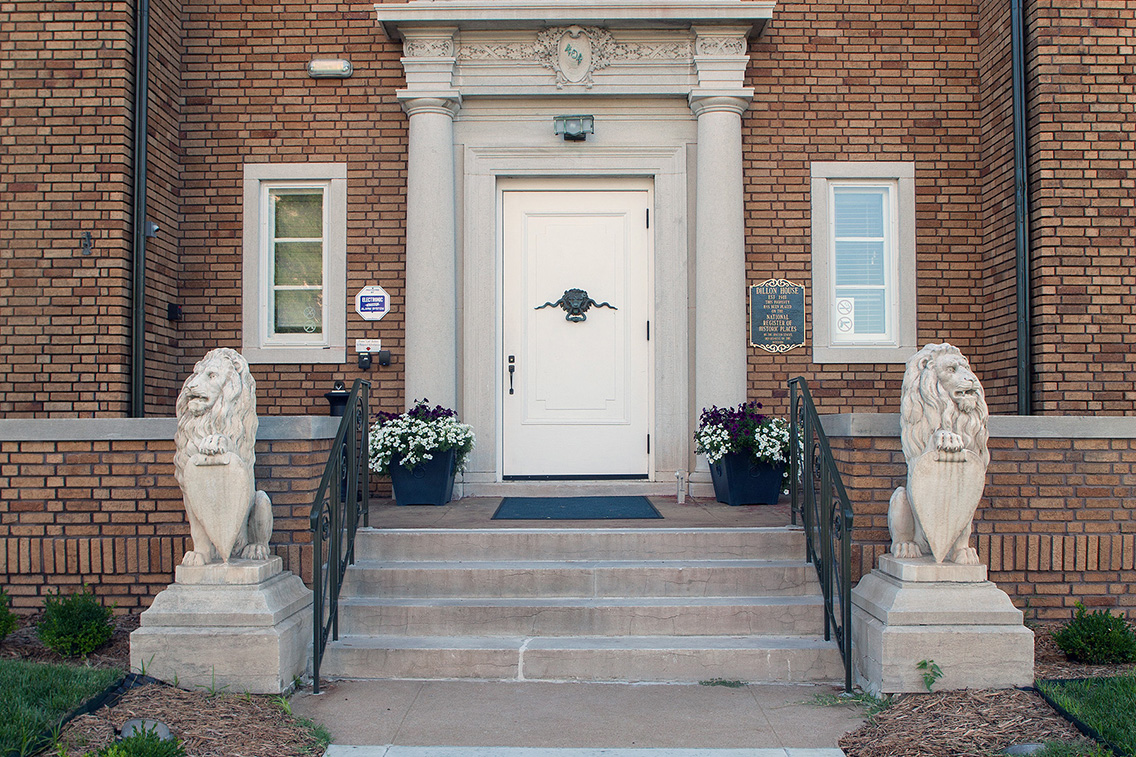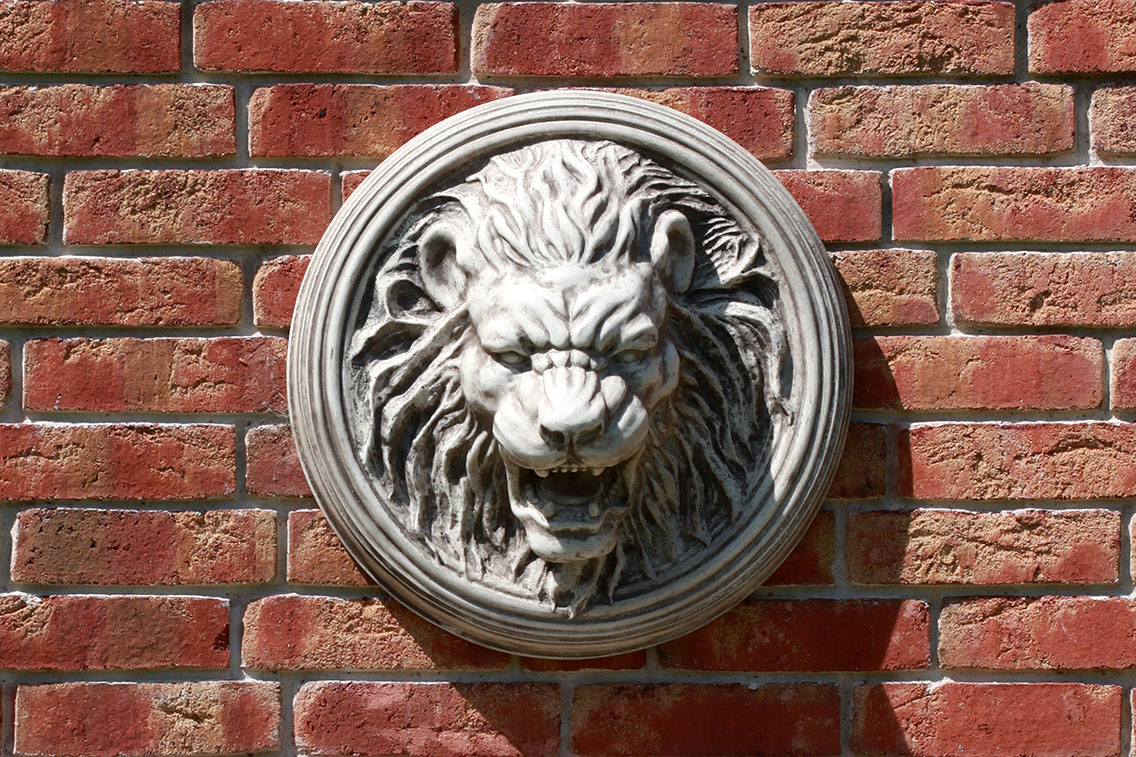Shoptalk: lions

How are lions used in architecture?
Definition
A lion is a large carnivorous feline mammal, Panthera leo of Africa and India, with a short tawny coat and a long heavy mane on the male. It is also a common motif in art, furniture design, and architecture. Symbolically, its most common traits are majesty, loyalty, stateliness, strength, courage, justice, and military might.
In China, lions act as guardians, defending homes against accidents and theft. For Buddhists, lion statues are said to bring peace and prosperity. In Italy, they symbolize power and prestige, while in Quebec, homeowners place one or two lions in front of the house once they have paid off their mortgage.
The lion is also a popular symbol on the U.S. Capitol campus in Washington, D.C., where the “king of the jungle” can be found at the Grant Memorial, the Senate Fountain, the Rayburn Building, the Brumidi Corridors, the Thomas Jefferson Building, and the Capitol Visitor Center.
Examples
Sometimes the whole animal is used, whereas other examples use the head or paw. The head served as a scupper on ancient classic temples and was also used as a door knocker or handle on Gothic and Renaissance doors and cabinets. The paw, on the other hand, was a common motif seen at the end of a furniture leg. Lion’s paws often appeared on Greek and Roman furniture, as well as in French, English, and Italian Renaissance furniture designs. Thomas Chippendale also featured lion’s paws as a furniture motif in the 18th century.
Winged lions are another variant of the lion motif. When the creature features an eagle’s head and wings on a lion’s body, it is known as a griffin. This mythological creature is found in various forms, especially in Ancient and Medieval civilizations. Winged lions appear in Sumerian, Akkadian, and Persian mythology, as well as in the Judeo-Christian Bible: the first beast in the first vision of the prophet Daniel resembled a winged lion. Examples are found on the temple of the Winged Lions, Petra, Chenonceau in France, and at Il Vittoriano in Rome.
Last but not least, we have the Chimera. According to Greek Mythology, this was a monstrous fire-breathing creature composed of the parts of more than one animal – usually depicted as a lion, with the head of a goat protruding from its back and a tail that might end with a snake’s head.
Stay on the leading edge
Stay up to date on emerging trends, research, hot topics, and more delivered conveniently to your inbox.
"*" indicates required fields













